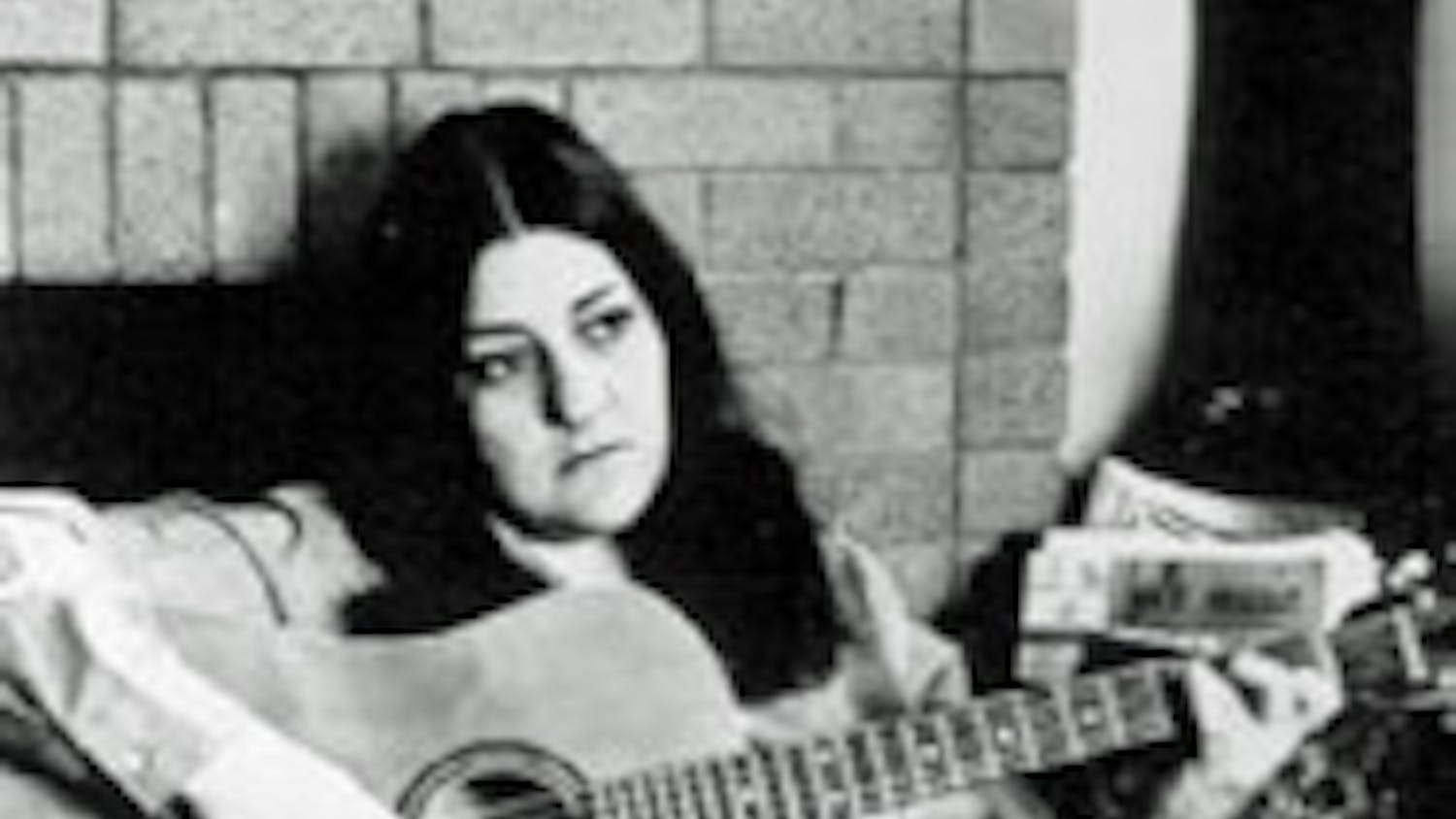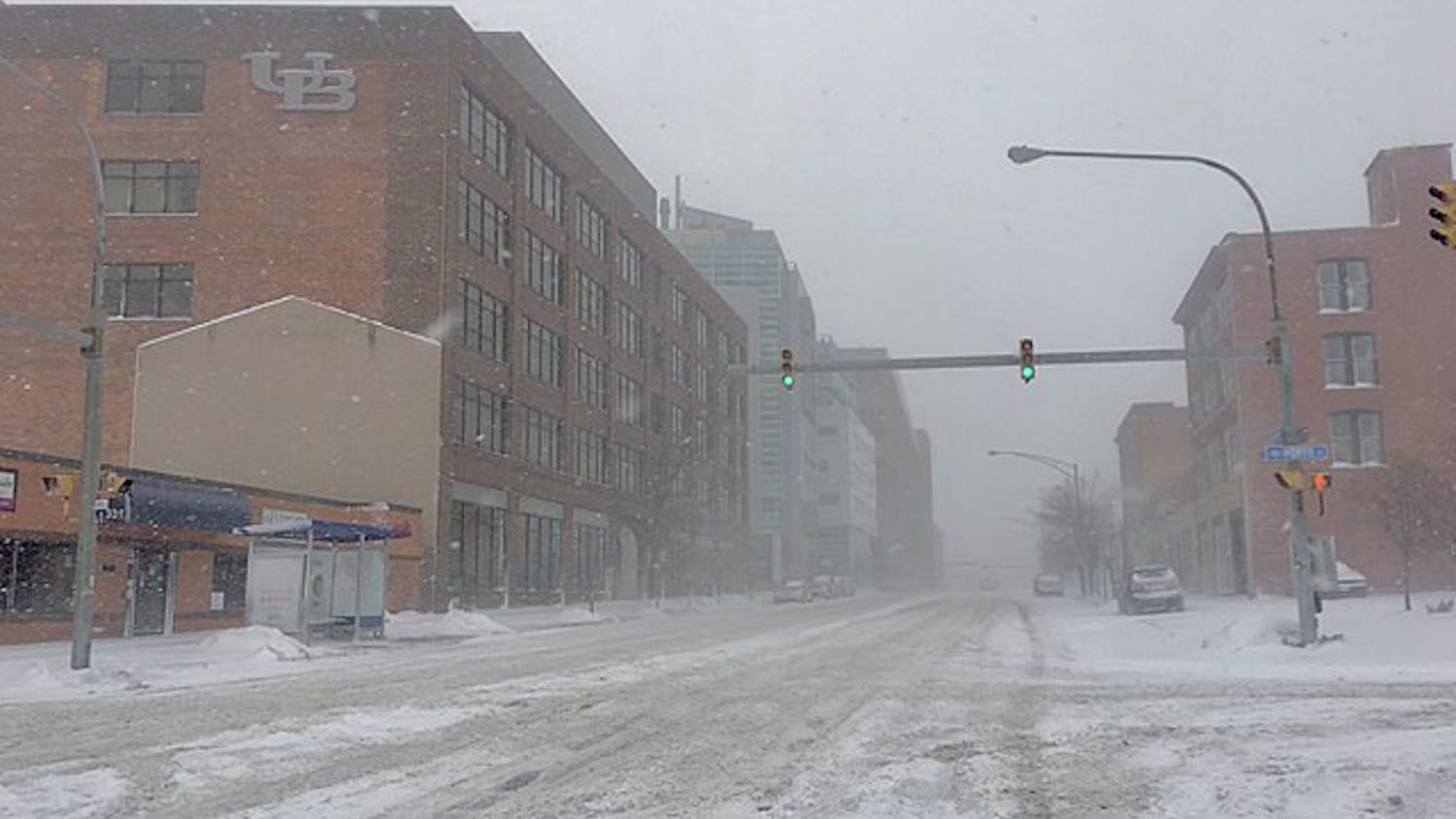Tear gas flooded Norton Hall as police officers tried to suppress anti-Vietnam War protests. Students were strewn across the buildings, and police shot their gases and birdshot into any building in sight.
Ira Flatow and his student colleagues bought tear gas masks at the local Army/Navy surplus store and continued to report on the night's events – as a reporter for WBFO (UB's arm of National Public Radio or NPR), Flatow was expected to be the eyes and ears for UB's student population.
As an engineering major, the middle of political fire was the last place Flatow ever expected to be.
From science to reporting
Flatow grew up on Long Island and came to UB expecting to pursue a degree in engineering. A self-proclaimed science "lover" and "nerd," Flatow was a bit disappointed in what he chose to study.
"When I was an engineering student, engineering didn't turn out to be what I thought it would to be," Flatow said. "So I wanted to continue to get my degree in engineering and finish up, but I didn't think I was going to make a career out of it."
Flatow took this opportunity to look for other interests to get involved in around campus. He was a part of theatre and a TV studio while in high school, and he hoped to continue these passions at UB.
In 1969, Flatow found WBFO, the student-run radio station on campus. He went to a meeting, and when the news director asked who was interested in working for the news department, Flatow raised his hand.
"Next thing I knew, he had handed me a tape recorder and told me to go down to Niagara Square," Flatow said. "And so I learned how to cover anti-war demonstrations."
UB in the 1970s
The 1970s were a decade of political turmoil. The Vietnam War had students across the country protesting against their government, and much like the highly publicized Kent State massacre, UB became a hotbed for activism.
Flatow describes the UB riots and protest as "the night that the campus went mad." He remembers police filling every inch of the Main Street campus (the "old" campus) with tear gas. He remembers students even being shot with birdshot – not quite as severe as the Kent State shootings, but no less tragic, according to Flatow. Students were just piling up in hallways and across the campus grounds.
"It's very scary and it's very educational," Flatow said. "It's scary because when there's a riot going on, all of the news first reports about any source of tragedy."
Flatow and his colleagues stayed on the air until 3 or 4 a.m., he remembers. WBFO was one of the only reliable news sources on campus, solely because its Norton Hall office was located in the middle of the conflict. Flatow said he learned that night that news will always report tragedy, and the first reports may be wrong – a lesson learned because wire news services were being censored.
"The news didn't get out of Buffalo," Flatow said. "The wire services censored stories coming out. They only really gave the side of view of the police that night. We were there, and we watched it. We knew the reporter who filed the wire service story, and he wanted to update his story and tell them they had gotten it wrong. They refused to do it."
Return to science
In 1971, Flatow graduated from UB with a degree in engineering. He subsequently left WBFO and followed in Bill Siemering's (WBFO's station manager) footsteps to NPR. Here, he was able to reunite with one of his first loves – science – and he began to host "Science Friday."
He even credits WBFO with his first science story – the first Earth Day was held in April 1970.
"I had taken a course in ecology, and I think that was the first ecology course that was ever given at UB," Flatow said. "So I enrolled as a freshman, and I was very interested in it. Now I can do something beyond the radio and cover some science topic."
This show is broadcasted each Friday, and is Flatow's attempt to "make science and technology a topic for discussion around the dinner table." He explained this means, in simple terms, he wants to replace "dinner" discussions of pop culture, sports, or business with discussions of stem cells, the environment, or black holes; he wants to make science intriguing.
Science Friday covers everything from nanotechnology and cosmology to health issues, the environment, global warming, and evolution – the "hot-button" issues and all of the little joyous scientific discoveries that happen along the way, according to Flatow. He's even had the chance to interview Jane Goodall.
"She talked about her life and how she got involved with chimps and her whole career – a wonderful story," Flatow said. "At the end of the interview, she said that she believed in the abominable snowman, Yetis, and Sasquatch. That was really a shocker."
Beyond WBFO, UB, and NPR
In his spare time, Flatow enjoys sailing, raising his own orchid garden, and playing tennis. As a true scientist, he likes to spend time looking at the sky.
Flatow travels around the country, appearing at various public speaking events. He helped start The Science Friday Initiative – a nonprofit organization that creates educational outreach from Science Friday topics. He's recently guest starred on The Big Bang Theory, and brought Science Friday to sitcom glory.
But, above all, Flatow looks upon his years at UB fondly, and he credits UB as the place where he found a love for reporting. He hopes current students will take advantage of everything offered at the university, and find a niche of their own.
"Students go to school to take courses, but they're really going to school to grow up," Flatow said. "And that's what kids should do with their time – learn how to grow up. [Students] should take advantage of the independence and freedom that they're never going to have again. Experiment with new things. Take as much advantage of the extra stuff going on outside of the classroom that you can."
Email: news@ubspectrum.com





